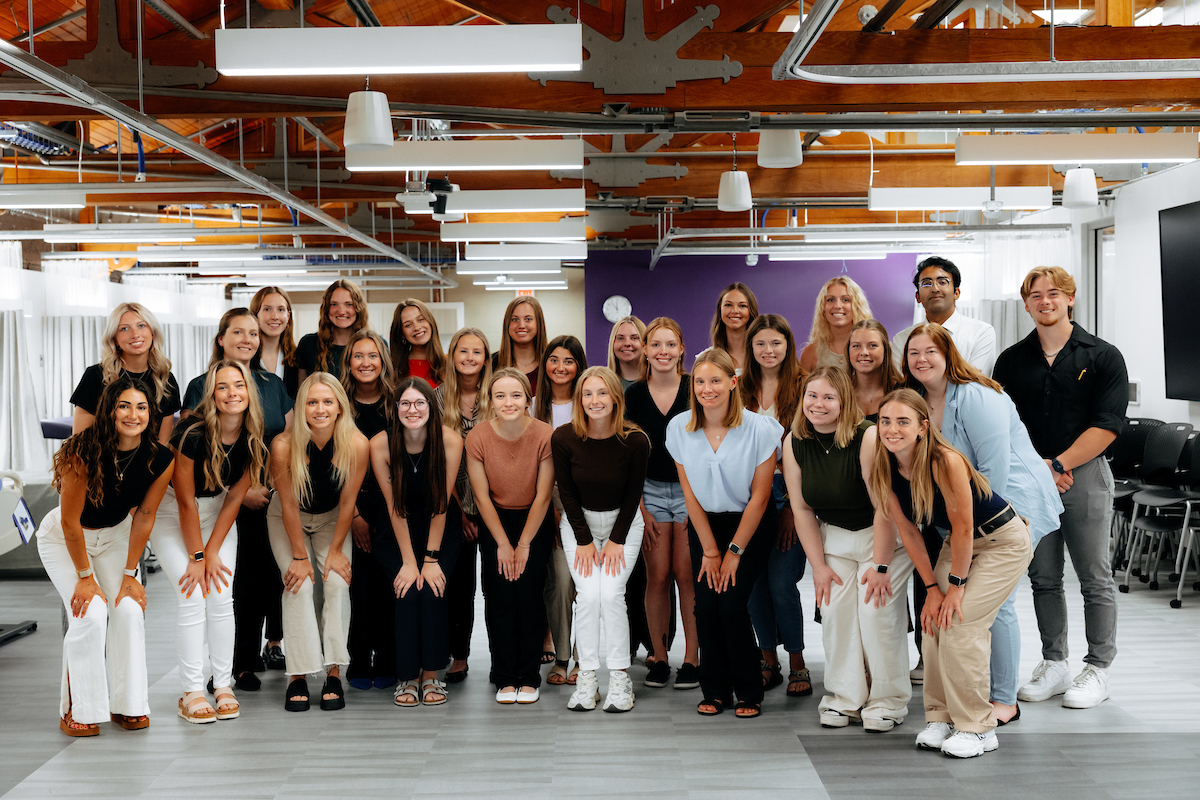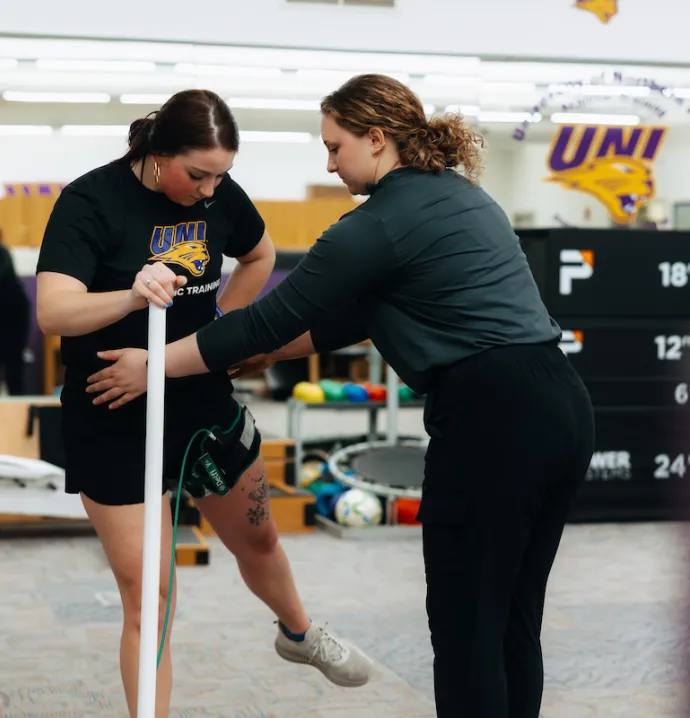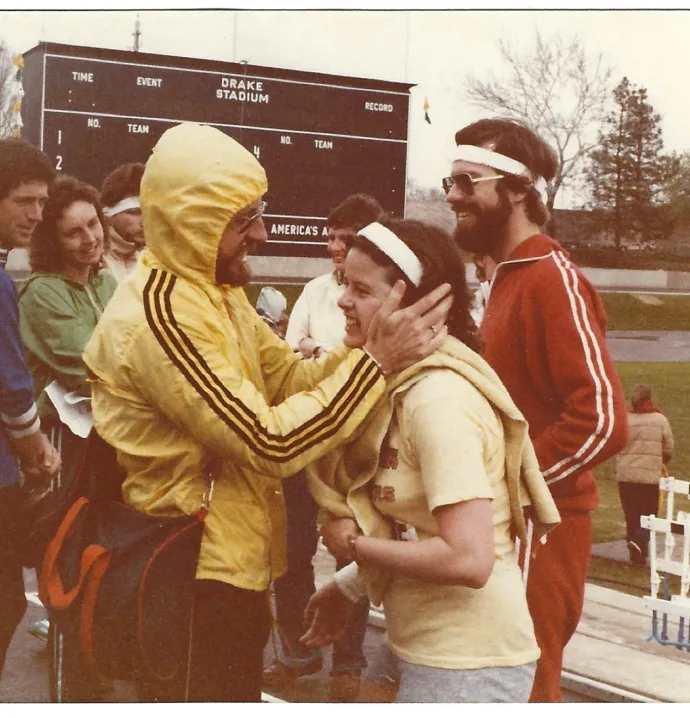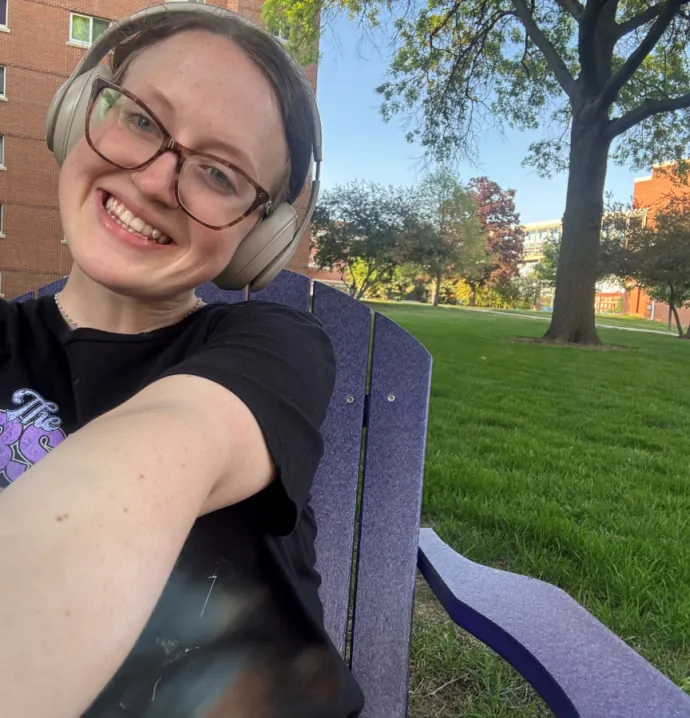An innovative hub for nursing education
An innovative hub for nursing education
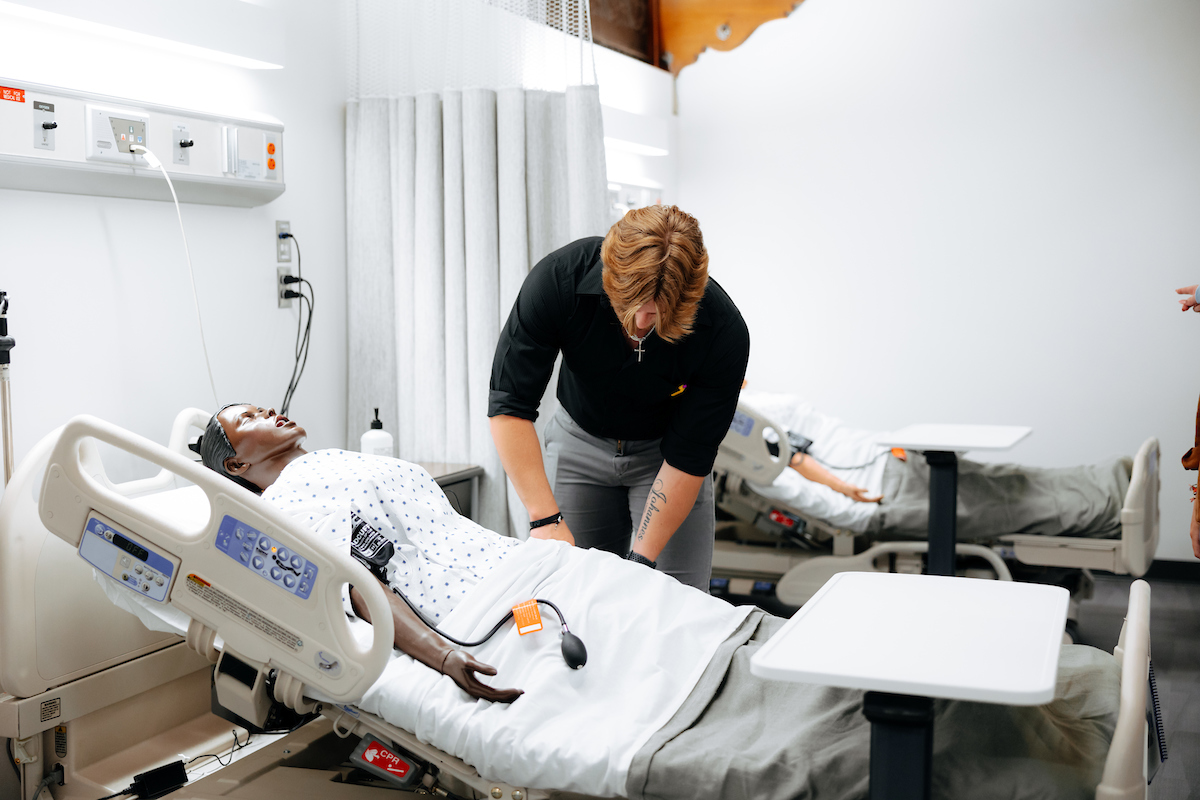
Back when Nancy Kertz was interviewing for the role of UNI’s chief academic nursing administrator, she toured several buildings identified as potential homes for UNI’s dedicated Bachelor of Science in Nursing program. She toured the Innovative Teaching and Technology Center (ITTC) first.
“I remember saying to one of the UNI folks who was giving the tour, ‘This is a great space. This could work,’” said Kertz.
When architects brought forward plans based on what nursing education typically looks like, Kertz knew it wasn’t quite what she’d envisioned. So she sketched her own design.
“When I think of competency-based delivery, it's important to think about what skills students need to master,” said Kertz. “How do we get them from the novice early learning stages up to a very high level of proficiency? What I knew didn't work was the traditional classroom style where students would go into a classroom and hear the lecture. Maybe another day or time, they would go into a setting and practice the skills. Then another day, they would have some simulation practice or go to clinicals. It was all very disjointed, in my opinion.”
“The idea was to create much more intensive, experiential learning environments where the students combine lecture, practice and then execution all in one seamless environment,” said Phil Simpson, UNI’s project manager for the renovation.

A three-phase project
RDG Planning & Design is bringing Kertz’s vision to life through a three-phase renovation within the ITTC. The first phase is complete, and work on the second phase has just begun. Fundraising efforts for the third phase and other components to support the nursing program is ongoing. Each phase represents about a year of renovation.
“The first cohort will have brand-new facilities going forward,” said Simpson. “It’s the top-of-the-line, best that we can offer, and that's going to be great for their future learning experience.”
Builders created two basic classrooms in Phase I, alongside a health assessment skills lab, foundation skills lab and simulation suites. Students will have the opportunity to work with lifelike models to practice administering IVs, checking vital signs, conducting CPR and more. Manikins within the simulation suites are more advanced, including a computer, microphones and speakers to simulate scenarios nurses might encounter with future patients. Students can also gain experience with live participants in the health assessment skills lab.
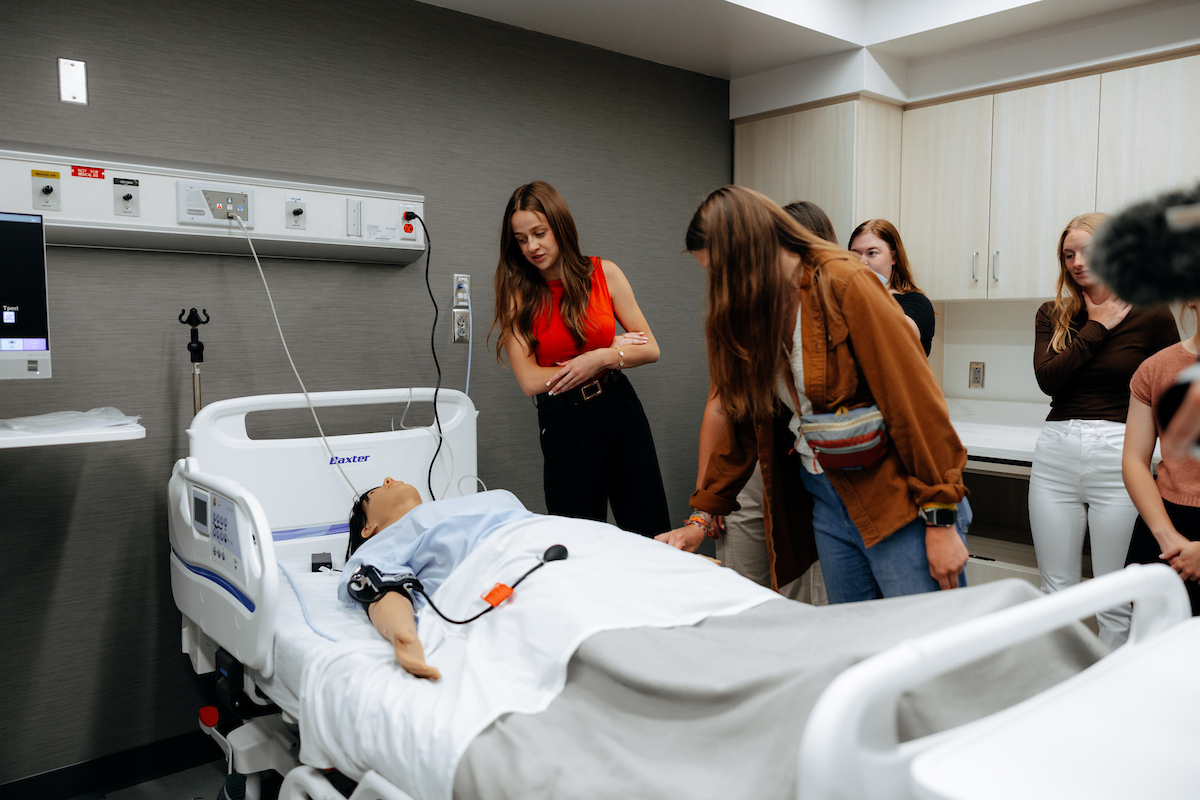
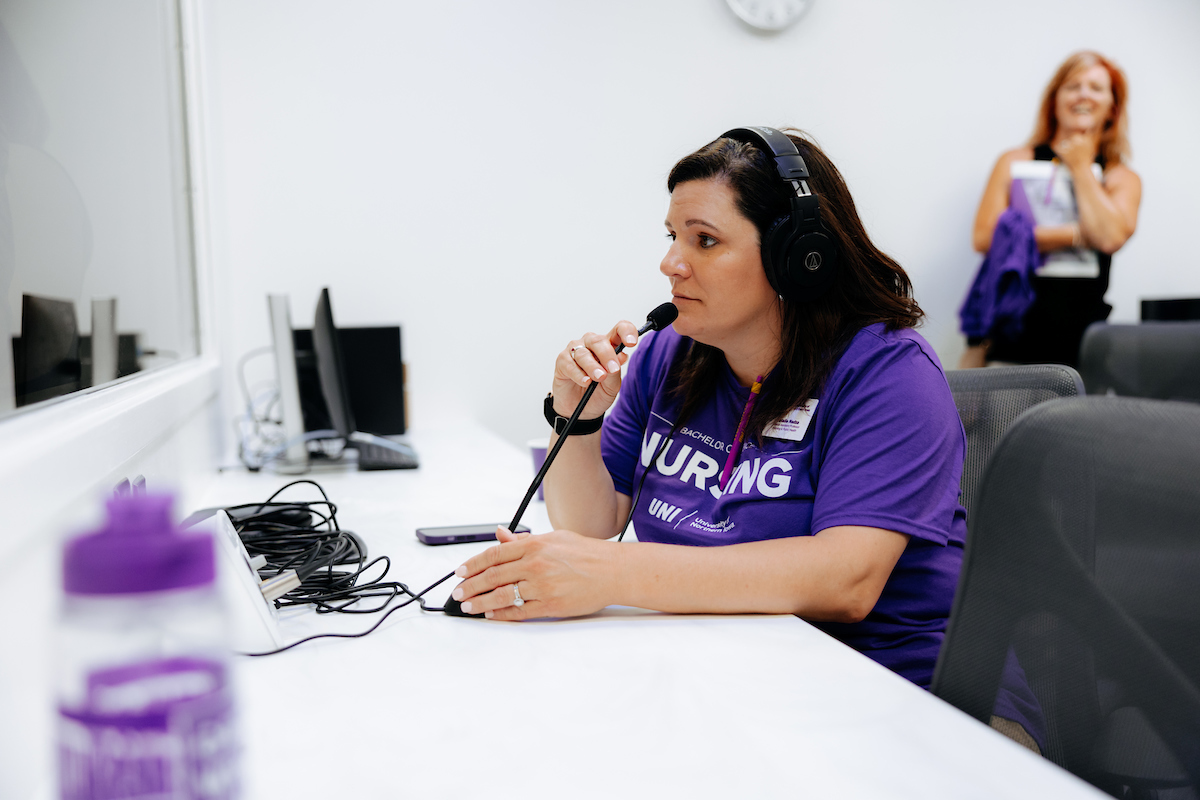
This first completed phase of the project is the result of a nearly $5 million investment, funded through a combination of gifts, grants and donations supported by university funds.
“We were very careful to save money on the facility renovation to create the space, so we could spend it on the equipment,” said Simpson. “The students are getting the top-of-the-line, brand-new stuff — nothing worn out or old — because we really value the student experience. We only bought the best to give them what they need to be proficient.”
“Our hallmark is we want our graduates to be practice ready,” said Kertz. “What that means is when they walk out the door, they're still newly-prepared nurses, but they can critically think, take care of multiple patients and have a higher level of function once they graduate than we typically see.”
The plan for Phase II is to build a medical-surgical lab with two simulation suites. This will help students understand more high-intensity situations in nursing, such as patients coming in from an accident or recovering from surgery.
A third phase will likely house a small apartment to simulate in-home care as well as a labor and delivery suite with a simulator that can deliver a baby.
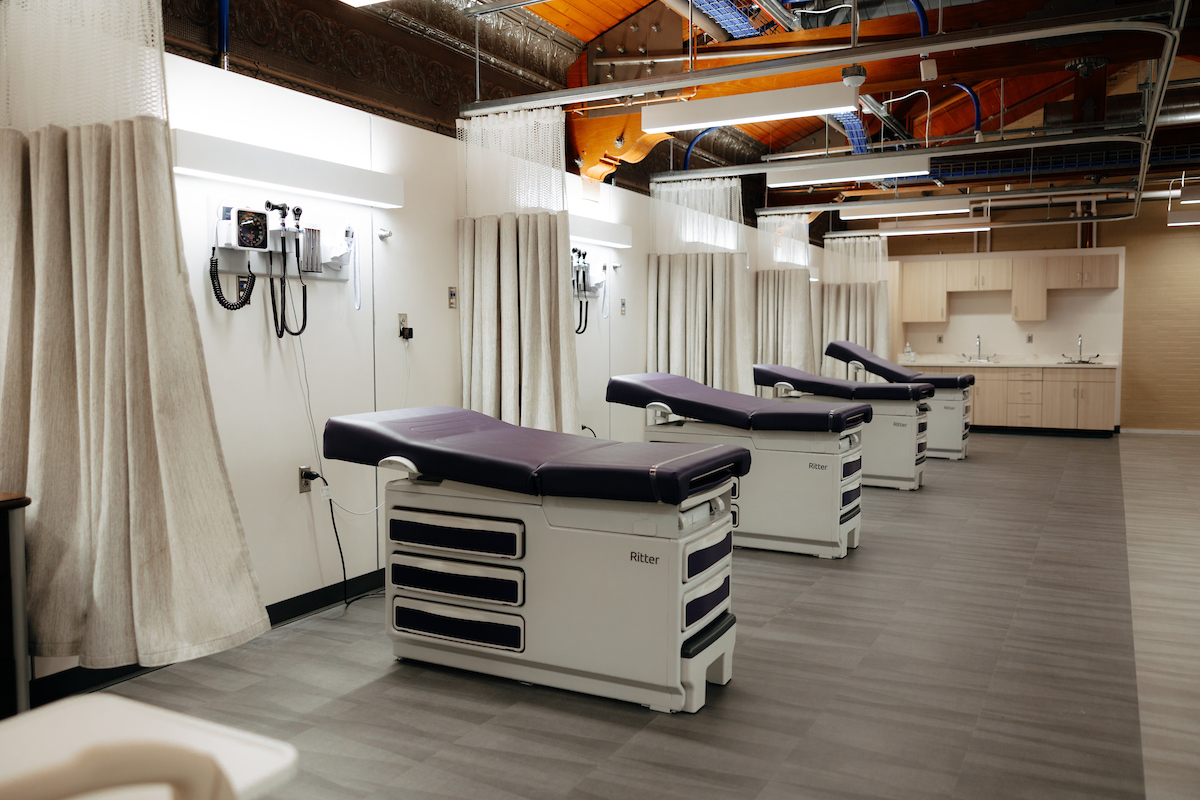
“We don't really know what that third phase is going to completely look like, but the idea is that instead of it being like walking into a hospital ward where you have 12 beds, it'd be more like walking into a hospital floor where there'll be a nurse's station and rooms off of it where different things happen, and you'll be going in and out,” said Simpson. “It'll be much more like simulating the modern hospital environment.”
It took about two years to complete the Phase I building project in the ITTC. Simpson says a project of this size and scope would typically take an additional year.
“This is actually probably the fastest project that I've ever worked on in 30 years,” he said. “But everybody working on the project was aligned and understood this is an important project that needed to happen for its impact on our institution through enrollment and then long-term benefits to the state as well.”
With the exception of some furniture additions and unpacking, the space was ready for nursing students to tour during summer orientation.
“They hadn't seen the structure before they came in for this nursing student orientation,” said Kertz. “So they were trusting us, trusting UNI, to have a facility that could help them achieve their educational goals. So it was really fun and exciting to see their response.”
Students and their parents both expressed excitement over the nursing space.
Preserving history
As one of the oldest buildings on campus and the former Women’s Gymnasium, preserving the history of the ITTC in the midst of these renovations has been vital. The nursing students will still be able to see old relics of the gym peeking through in the form of trusses.
“We just felt like the history of the building was very unique, and we wanted to preserve that,” said Simpson. “We wanted to showcase in the upper levels the trusses of the old gym and bring that sort of history back together. There's a juxtaposition there between the old and the new below the trusses. It's all brand-new, state-of-the-art, balanced with the history of the exposed architecture. It's almost as if the ghosts of the past are looking in on our new nursing program, supporting it and taking care of it as the building goes in a new direction.”
